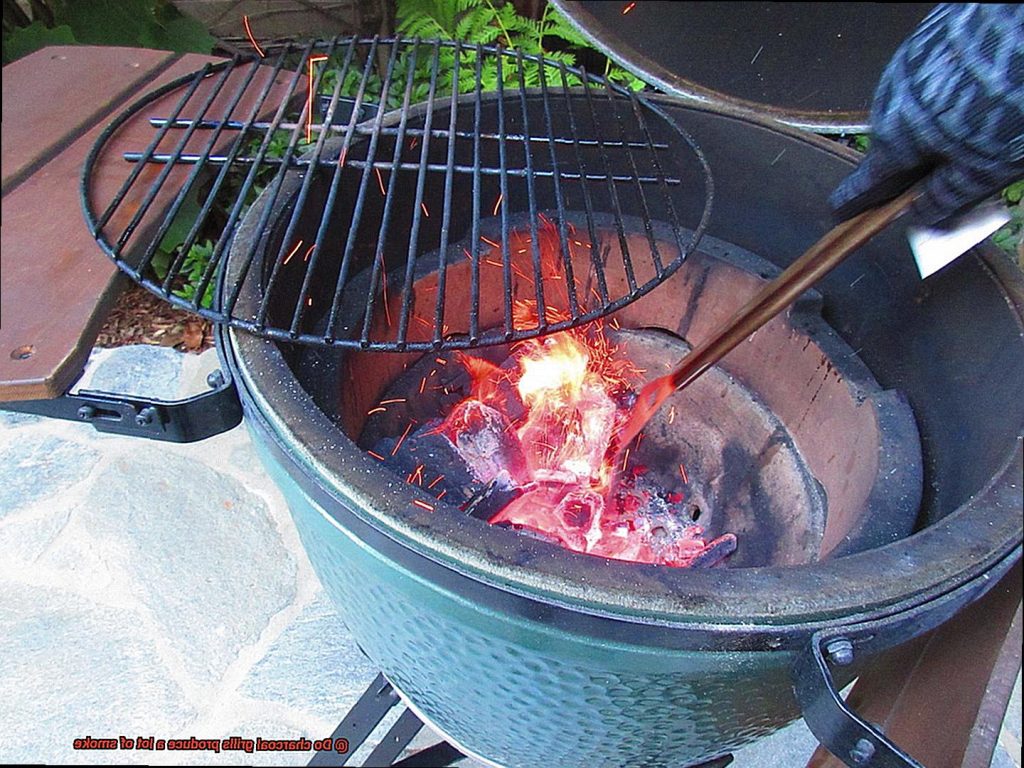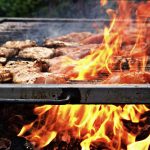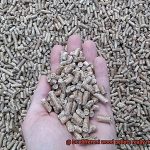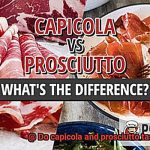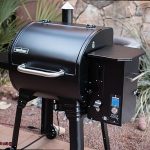Close your eyes and imagine a warm summer evening, the sun slowly dipping below the horizon as the tantalizing aroma of sizzling meat wafts through the air. But suddenly, your dreamy scene is interrupted by thick clouds of smoke billowing from your charcoal grill. Don’t worry though, we’re here to answer the burning question – Do charcoal grills produce a lot of smoke?
Charcoal grilling aficionados swear by the delicious flavor that comes with cooking over coals, but one common complaint is excessive smoke production. While some smoke can be desirable, too much can leave an unpleasant aftertaste.
In this post, we’ll dive into the different factors that influence smoke production in a charcoal grill – from the type of charcoal you use to your grilling technique and even whether you opt for wood chips or not. We’ll also share tips on how to reduce smoke output without sacrificing that mouthwatering smoky flavor.
Whether you’re a seasoned grill master or just starting out, keep reading to discover how to achieve perfectly smoked meats with minimal smoke interference.
Contents
What is Charcoal Grilling?
Using charcoal as the primary source of heat, this popular technique creates a unique flavor and aroma that simply cannot be replicated with gas grilling. In this article, we will explore what charcoal grilling is, the advantages it offers over other methods, and how to minimize smoke production.
Charcoal is made from wood that has been burned down to a carbon-rich substance. It is then combined with other materials like sawdust or cornstarch to form briquettes or lump charcoal. This fuel source is preferred over gas grilling because it infuses food with a smoky flavor that many people find irresistible.
There are different types of equipment used for charcoal grilling, including kettle grills, ceramic kamado grills, and offset smokers. Each type of grill has its own advantages and disadvantages but relies on charcoal as the primary source of heat.
One concern that many people have with charcoal grilling is the amount of smoke produced. However, there are ways to minimize smoke production. Firstly, it’s important to choose the right type of charcoal. Briquettes tend to produce more smoke than lump charcoal because they contain binders and fillers that release more smoke when burned. Therefore, it’s best to use lump charcoal if you want to reduce the amount of smoke produced.
Secondly, regulating temperature is crucial when trying to reduce smoke production. If the grill is too hot, it can cause the charcoal to burn too quickly and produce more smoke than necessary. By adjusting the airflow and using a thermometer to monitor the temperature, you can control the heat and ensure that the charcoal burns at a steady rate, reducing smoke production.
Lastly, the type of food being grilled can also impact the amount of smoke produced. Foods with high-fat content or those marinated in oil or other liquids tend to produce more smoke when grilled. This is because the fat and liquids can drip onto the hot coals and create smoke. Therefore, if you want to minimize smoke production, it is best to choose leaner cuts of meat and avoid using excessive marinades or oils.
Types of Charcoal Used in Grilling
In this article, we will explore the differences between lump charcoal and briquettes, and how each type of charcoal affects smoke production when grilling.
Lump Charcoal: Natural Hardwood for Intense Heat
Lump charcoal is made from natural hardwood such as oak, hickory, or mesquite. It is created by burning wood in the absence of oxygen until all that remains is carbon. This results in a charcoal that ignites faster and burns hotter than briquettes. Because of its irregular shape, it can be more challenging to control the temperature, but many grillers appreciate its natural composition without any added chemicals or fillers.
If you’re looking for intense heat and quick cooking times, lump charcoal is the way to go. It produces a unique smoky flavor that enhances the taste of grilled food. The lack of additives means that there’s less ash and smoke produced, resulting in a cleaner burn.
Briquettes: Uniform Pieces for Consistent Heat
Briquettes, on the other hand, are made from a combination of charcoal dust, sawdust, and binders such as cornstarch. They are shaped into uniform pieces using a mold and are often infused with additives such as lighter fluid to make them easier to ignite. Briquettes burn longer and produce a more consistent heat than lump charcoal but can also produce more smoke and ash.
It’s important to note that not all briquettes are created equal. Some brands use fillers and additives that can produce more smoke and undesirable flavors. To minimize smoke production, look for high-quality briquettes made from pure hardwood charcoal without any added chemicals or fillers.
Controlling Smoke Production while Grilling
Both types of charcoal will produce smoke during the grilling process. However, the amount of smoke can be influenced by factors such as the quality of the charcoal, the amount used, and the ventilation of the grill. It’s important to have proper airflow to prevent smoke buildup.
If you want to minimize smoke production while grilling with charcoal, it’s best to opt for lump charcoal and avoid using lighter fluids or other accelerants that can contribute to smoke production. Additionally, adjusting the amount of charcoal used can also affect smoke production. Using less charcoal can result in less smoke.
Personal Preference and Grilling Style
Ultimately, the choice between lump charcoal and briquettes comes down to personal preference and grilling style. Some grillers prefer the intense heat and smoky flavor of lump charcoal, while others appreciate the consistent heat and longer burn time of briquettes. It’s important to experiment with both types of charcoal to find what works best for you.
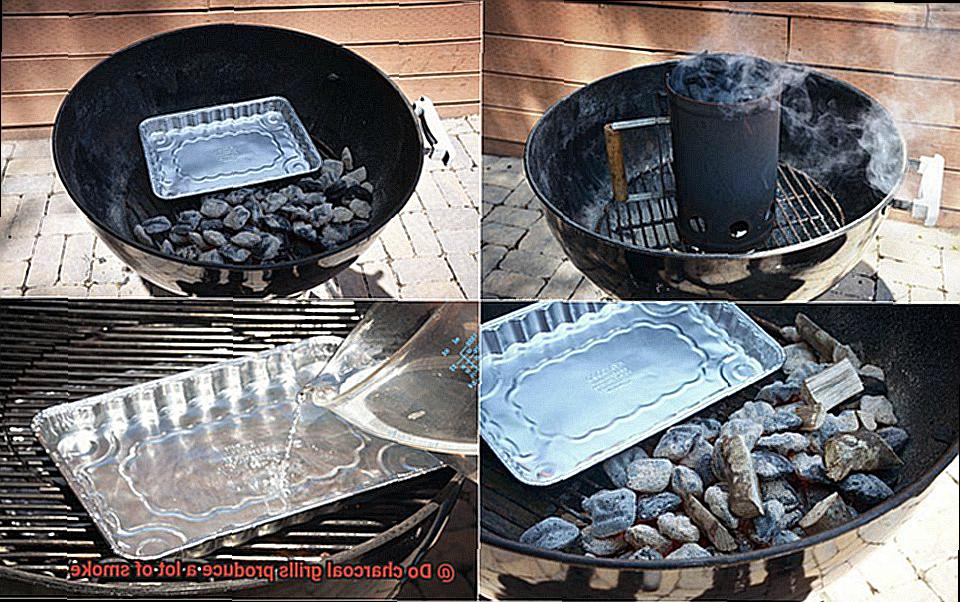
Factors That Affect Smoke Production
Understanding the factors that influence smoke production from charcoal grills is essential to achieving the ideal level of smokiness in your grilled food. Let’s explore the different factors that can affect smoke production.
Firstly, the type of charcoal used can have a significant impact on smoke production. Briquettes tend to produce more smoke than lump charcoal. Therefore, it’s important to keep this in mind when selecting your charcoal.
Another factor to consider is the airflow in your grill. The amount of air flowing into and out of the grill affects how hot your charcoal burns, which directly impacts smoke production. Not enough airflow results in a cooler fire and more smoke, whereas too much airflow causes a hotter fire with less smoke. Striking the perfect balance is critical.
The amount of charcoal used also plays an important role. Too much charcoal results in less smoke as the grill becomes too hot. Conversely, using too little charcoal leads to lower temperatures and more smoke.
Lastly, the type of food you’re grilling can also affect smoke production. Foods high in fat or moisture tend to produce more smoke than leaner foods because they drip onto the coals, causing them to flare up and produce more smoke.
The Role of Temperature in Smoke Production
As a grill master, you know that the perfect smoky flavor can make or break your barbecue masterpiece. But have you ever wondered why some grills produce more smoke than others, or why your meat tastes different depending on the temperature you cook it at? Let’s dive into the fascinating role of temperature in smoke production.
First, let’s talk about the science behind smoke. When fat and juices from your meat drip onto the hot charcoal, they vaporize and create smoke. At lower temperatures, these drippings don’t vaporize as quickly, resulting in less smoke. But as the temperature increases, so does the amount of smoke produced. So, if you want that classic smoky flavor, you’ll need to crank up the heat.
However, too much smoke can actually be harmful. When meat is cooked over high heat with excessive smoke, it can create carcinogenic compounds known as polycyclic aromatic hydrocarbons (PAHs). To find that sweet spot between enough smoke for flavor and not too much for safety, it’s important to monitor your grill’s temperature.
Using a thermometer to maintain a consistent temperature will ensure that your meat is cooking evenly and not getting over-smoked. You can also experiment with different types of charcoal and wood chips to find the right balance of flavor without excessive smoking.
The Impact of Food Type on Smoke Production
As any grill master knows, smoke is a key ingredient when it comes to creating mouth-watering barbecue. But did you know that the type of food you’re cooking can have a significant impact on the amount of smoke produced? Let’s explore the fascinating topic of the impact of food type on smoke production.
One important factor to consider is the level of fat in the food being cooked. When grilling fatty cuts of meat like ribs or brisket, the fat will render and drip onto the hot coals, resulting in copious amounts of smoke. The smoke adds a delicious flavor and can help create that coveted bark on your meat. However, too much smoke can lead to bitterness, so finding the right balance is key.
Another factor to consider is the sugar content in the food. When grilling food with a sweet marinade or sauce, the sugar will caramelize and create smoke as it cooks. This is why you’ll often see a lot of smoke coming off of barbecue sauce-covered chicken or ribs.
On the other hand, grilling vegetables or lean proteins like chicken or fish may produce less smoke since there is less fat and sugar content to create it. While these foods may not produce as much smoke, they still provide an opportunity to experiment with different flavors and techniques.
It’s important to note that while smoke can add flavor to food, too much smoke can also result in a bitter taste. To avoid this, try using different charcoal and wood chips, use a thermometer to monitor temperature and cook times, and find that perfect balance between flavor and safety.
Best Practices to Reduce Smoke from Charcoal Grills
Don’t worry, there are some best practices that can help you reduce smoke production and make your grilling experience more enjoyable. As an expert in this field, here are my top tips for minimizing smoke and maximizing flavor.
- Use the Right Amount of Charcoal: Overloading your grill with charcoal can lead to excessive smoke production. Instead, use only the amount of charcoal necessary to cook your food. This not only reduces smoke but also saves you money on charcoal.
- Try Natural Lump Charcoal: Natural lump charcoal produces less ash and smoke, giving you a cleaner grilling experience. Though it may cost a bit more, the taste is worth it.
- Use a Chimney Starter: Chimney starters are a fantastic alternative to lighter fluid. Simply fill a metal cylinder with charcoal, light a fire at the bottom, and let the heat rise and ignite the charcoal without creating any additional smoke or ash. Plus, it’s safer and more environmentally friendly.
- Maintain Proper Airflow: Proper airflow in your grill is key to reducing smoke production. Make sure all vents are open and avoid blocking them with food or other objects. This allows for better oxygen flow and less smoke production.
- Invest in a Grill Mat or Tray: Catch any drippings or excess grease that may cause flare-ups and smoke by investing in a grill mat or tray. This will not only reduce smoke production but also make cleanup easier.
Pros and Cons of Charcoal Grilling
Let’s explore the pros and cons to help you make an informed decision.
First, let’s talk about the pros. Charcoal grilling produces a unique and delicious smoky flavor that cannot be replicated by other cooking methods. The ability to adjust the charcoal placement in the grill allows for precise temperature control, making it easier to cook different types of food at different temperatures. Additionally, charcoal grills are versatile, allowing for a wide range of cooking styles such as smoking, searing, and indirect cooking.
However, there are also some cons to consider. One of the biggest drawbacks is the smoke produced by charcoal grilling. This can be problematic for those with respiratory issues or allergies and may also be an issue in areas with strict regulations on outdoor air quality. Additionally, charcoal grilling takes longer to set up and get started than gas grilling. Finally, charcoal grilling can be quite messy, with ash and other debris accumulating in and around the grill.
To summarize, here are some of the key pros and cons of charcoal grilling:
Pros:
- Unique smoky flavor
- Precise temperature control
- Versatile cooking styles
Cons:
- Smoke production
- Longer setup time
- Messy cleanup
kocnquRQOzs” >
Conclusion
In conclusion, charcoal grilling is a beloved cooking technique that imparts a unique and irresistible smoky flavor to food. However, one drawback of this method is the potential for excessive smoke production, which can leave an unpleasant taste in your mouth. Luckily, there are ways to minimize this issue.
Factors such as the type and amount of charcoal used, airflow within the grill, and the type of food being cooked all play a role in smoke production. To reduce smoke levels, it’s best to opt for natural lump charcoal instead of briquettes and avoid using lighter fluids or accelerants that can contribute to smoke output. Adjusting the amount of charcoal used can also have an impact on smoke production – using less charcoal results in less smoke.
At the end of the day, whether or not you choose to use a charcoal grill ultimately depends on personal preference and grilling style. By following these tips and experimenting with different types of charcoal and wood chips, you can achieve perfectly smoked meats without overwhelming amounts of smoke.

